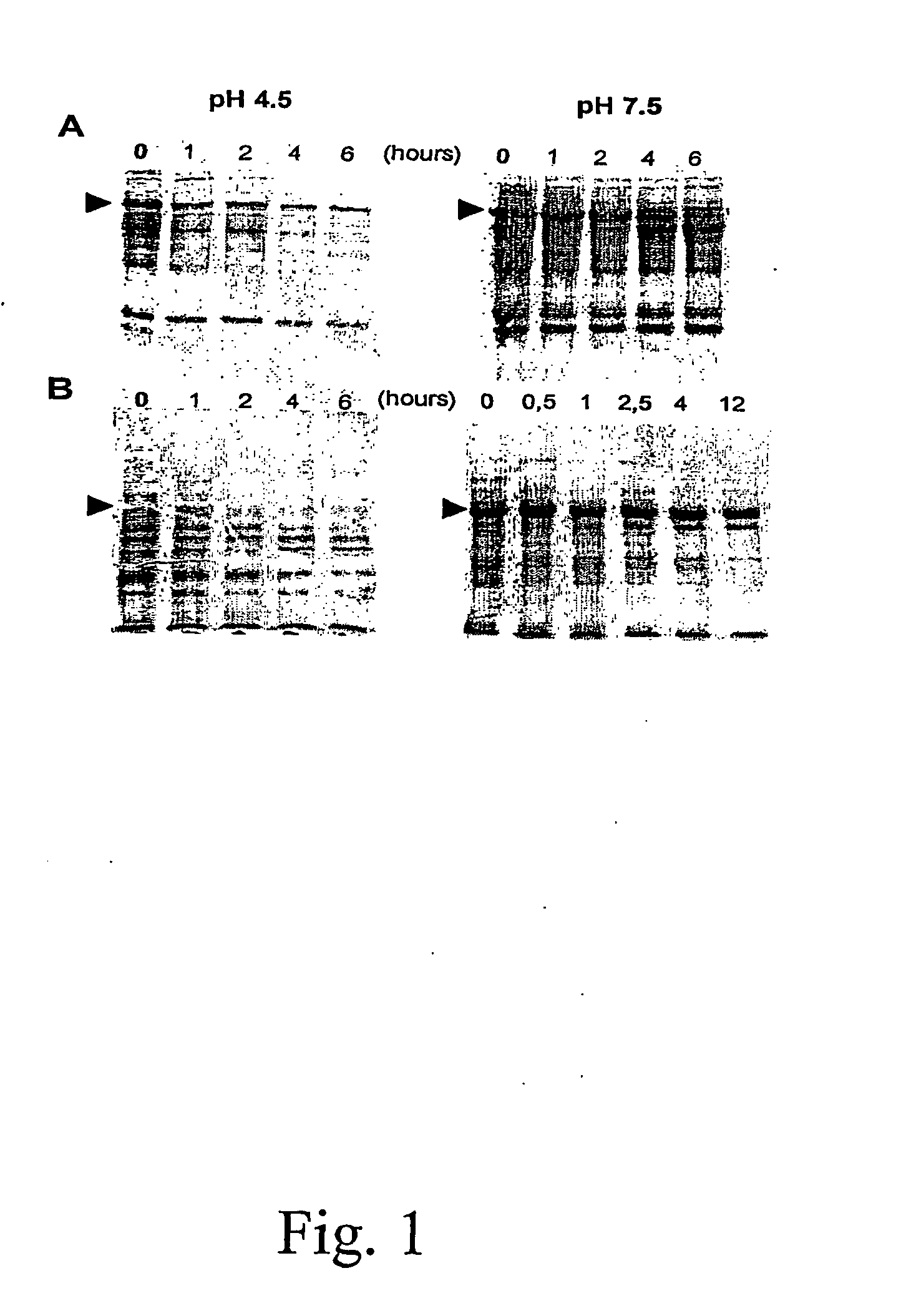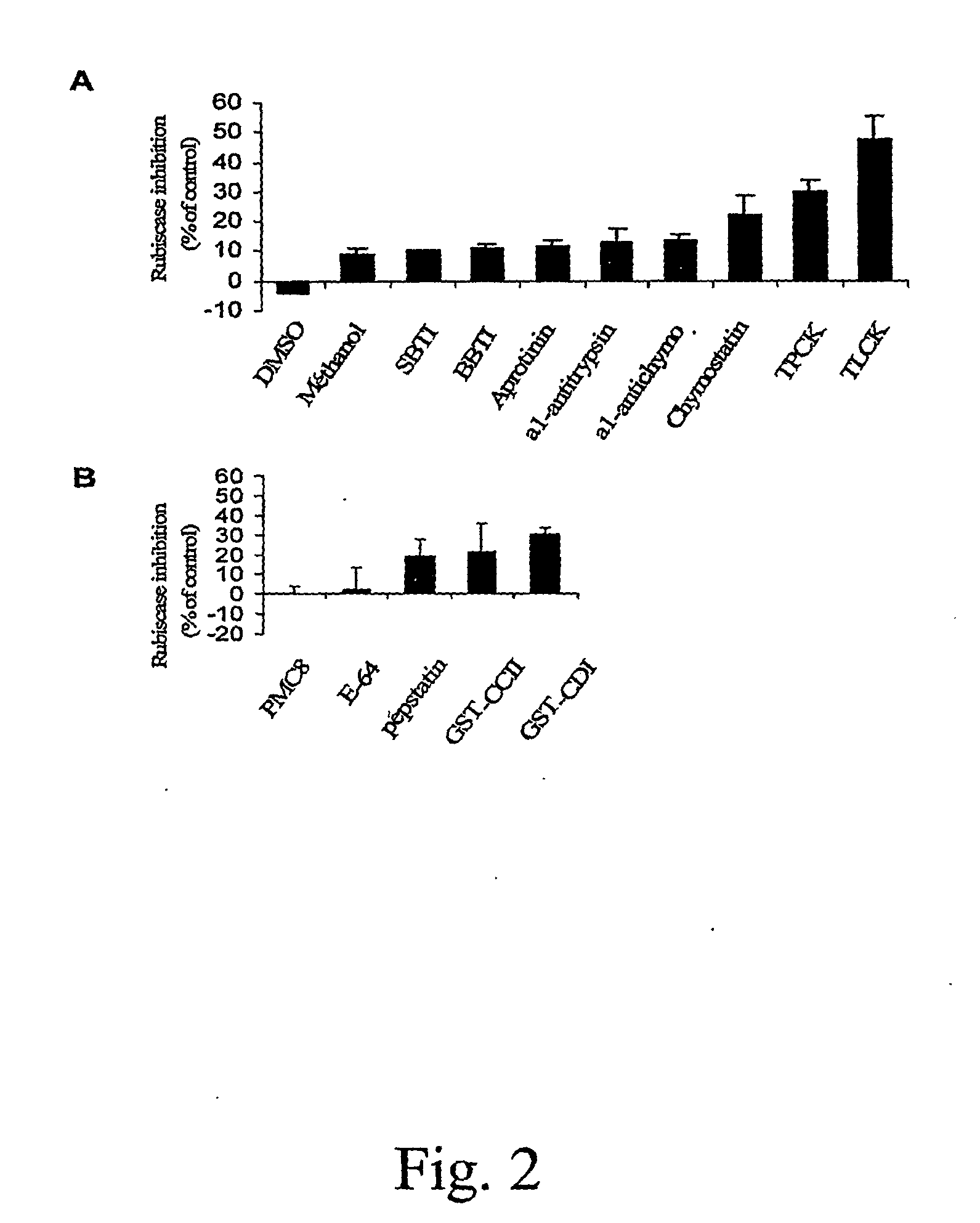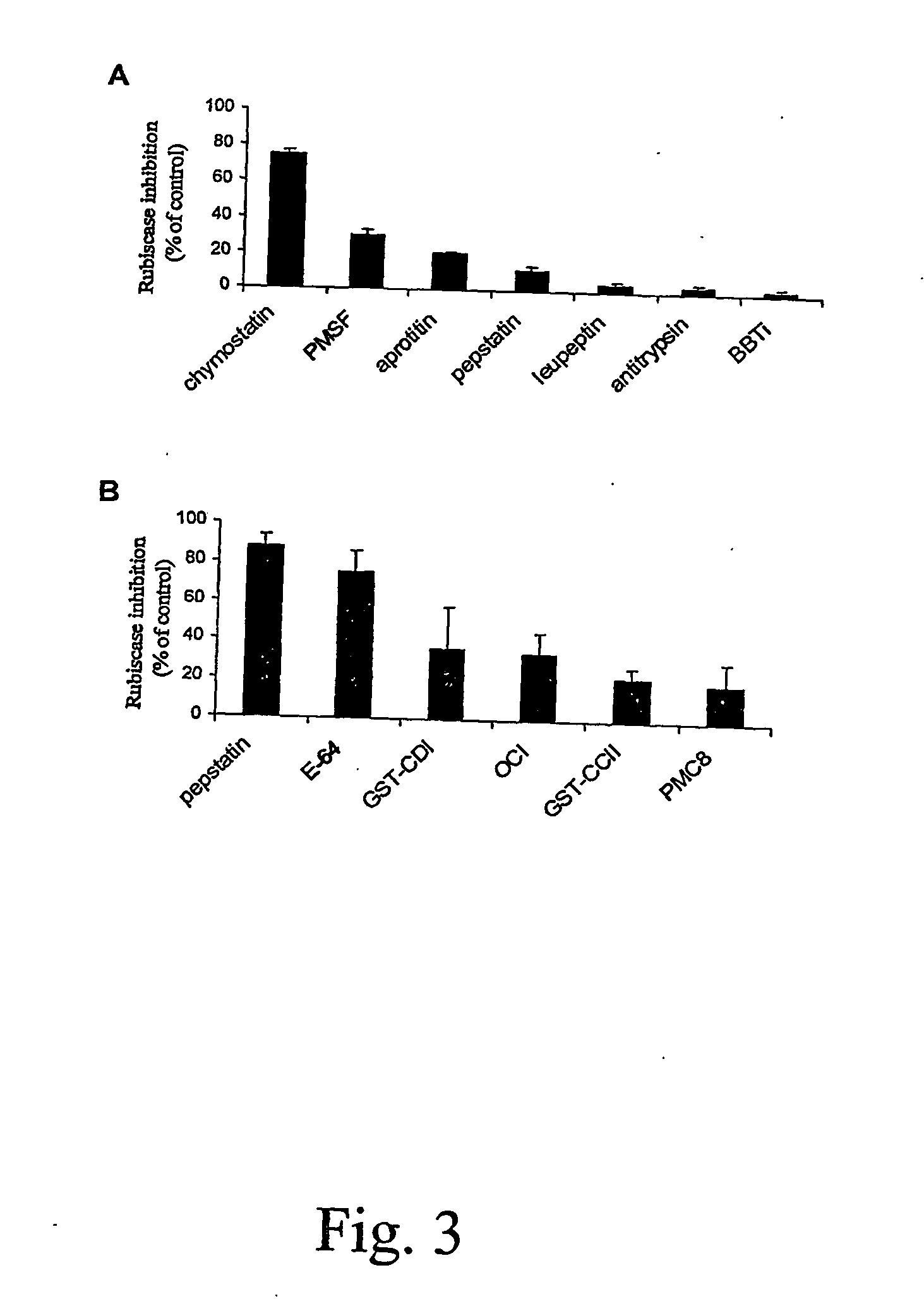Method for enhancing the nutritive value of plant extract
a plant extract and nutritive value technology, applied in the field of plant extract nutritive value enhancement, can solve the problems of low yield of valuable protein production, inability to meet the needs of plant exogenous high value protein, and little effort made in the direction of improving forage crop protein quality, etc., to achieve the effect of increasing the nutritive value of plants
- Summary
- Abstract
- Description
- Claims
- Application Information
AI Technical Summary
Benefits of technology
Problems solved by technology
Method used
Image
Examples
examples
[0073] The present invention will be more readily understood by referring to the following examples that are given to illustrate the invention rather than to limit its scope.
example i
Degradation and Protection of Proteins in Potato and Alfalfa Leaf Extracts
[0074] To establish a rationale for the identification of target proteases in plant extracts and the choice of inhibitors effective against these proteases, proteolytic activities in leaf tissues of alfalfa and potato were monitored using as a substrate ribulose 1,5-biphosphate carboxylase / oxygenase (Rubisco), the most abundant protein in plants.
[0075]FIG. 1 illustrates the fate of endogenous proteins in alfalfa (A) and potato (B) leaf extracts, showing their limited stability after extraction at low pH. Leaf samples (first to fourth leaves from the apex) were ground in liquid nitrogen. Proteins were extracted (1:3 w / v) in 50 mM Tris-HCl (pH 7.5) or 0.1 M citrate phosphate (pH 4.5), in the presence of 10 mM β-mercaptoethanol. The soluble protein extracts were agitated for 10 min at 4° C., and centrifuged for 10 min at 18000 g. The supernatants were recovered and protein concentrations were determined with th...
example ii
Effect of the Ectopic Expression of a Cathepsin D Proteinase Inhibitor into Potato on the Stability of an Endogenous Protein (e.g. Rubisco)
[0077] To assess the impact of ectopically expressing a recombinant protease inhibitor in the plant on the activity of endogenous proteases during extraction (ex vitro), a cathepsin D inhibitor from tomato, tomato CDI (Werner et al. 1993, Plant Physiol. 103:1473), was integrated into an expression vector and stably expressed into potato (cultivar Kennebec), under the control of the cauliflower mosaic virus 35S (CaMV 35S) promoter (CD lines). The tomato CDI-encoding DNA sequence was isolated from the expression vector pGEX-3X / CDI (Brunelle et al. 1999, Arch. Insect Biochem. Physiol. 42:88-98) by digestion with BamHI and EcoRI, and subcloned between the BamHI and EcoRI cloning sites of the commercial vector pCambia 2300 (CAMBIA, Canberra, Australia). The CaMV 35S promoter was isolated from the commercial plasmid pBI-121 (Clontech, Palo Alto, Calif...
PUM
| Property | Measurement | Unit |
|---|---|---|
| Time | aaaaa | aaaaa |
| Stability | aaaaa | aaaaa |
| Nutritive value | aaaaa | aaaaa |
Abstract
Description
Claims
Application Information
 Login to View More
Login to View More - R&D
- Intellectual Property
- Life Sciences
- Materials
- Tech Scout
- Unparalleled Data Quality
- Higher Quality Content
- 60% Fewer Hallucinations
Browse by: Latest US Patents, China's latest patents, Technical Efficacy Thesaurus, Application Domain, Technology Topic, Popular Technical Reports.
© 2025 PatSnap. All rights reserved.Legal|Privacy policy|Modern Slavery Act Transparency Statement|Sitemap|About US| Contact US: help@patsnap.com



